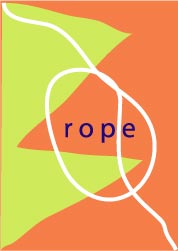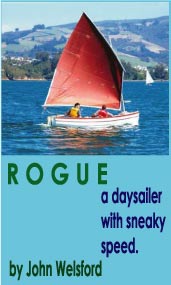
 Custom Search
|
| sails |
| plans |
| epoxy |
| rope/line |
| hardware |
| canoe/kayak |
| sailmaking |
| materials |
| models |
| media |
| tools |
| gear |
| join |
| home |
| indexes |
| classifieds |
| calendar |
| archives |
| about |
| links |
| Join Duckworks Get free newsletter CLICK HERE |
|
|
| Building Welsford’s Tread Lightly in Kansas |
by Daryl Heinlein - Goddard, Kansas - USA |
| This all started because of the three year drought that began in the summer of 2011. I was forced to pull my Seaward 24 out of its slip at Lake Cheney, Wichita’s 9,000 acre main water supply, on October 1st. The lake level had fallen 5 feet and I had to get it out of the marina or risk not getting it out for Winter. My wife told me to find something to do, knowing I would be a problem without being able to sail. About the same time, I read an article in SCA written by Bill Nolen about building a puddle duck racer. Living in Kansas doesn’t surround you with like minded people necessarily. I had never heard of the PDR but I started doing research on the internet and found the Duckworks site and many more. I told my wife about my discovery and used the “I think I will build one to teach the grandkids to sail” line to rationalize my efforts. I downloaded the Jim Michalak free “catbox” plans and went to Lowe’s and Home Depot in search of plywood. I had read about Ultraply XL and Sureply and all the cheaper forms of available building materials. The only option available locally was Sureply as no one at any of the big box stores had heard of Ultraply. I bought 2 sheets and proceeded to build PDR 615, a modified “catbox” with a cuddy cabin added to it. Somewhere in the middle of the PDR build, I realized that I was having a great time. I was forced to learn new things and apply the knowledge I have acquired in 60 years, to create and then solve problems. Constant reading on the Duckworks site allowed me to join their forum and gain access to the Sail Oklahoma and John Welsford forum’s as well. About this time, SCAMP was being tested and the Monies started posting their build photo’s on the SCA website. I read with great interest the articles coming out about SCAMP which led me to John Welsford’s plan page on Duckworks. I found Tread Lightly and wondered if I knew enough to build it. I went through most all of the plans that were small, had a cabin space and a mizzen and kept coming back to Tread Lightly. In February of 2012, I used a gift card from Duckworks to purchase the study plan. I spent the next month reading and rereading the plans, trying to determine the feasibility of building this boat and whether my own time constraints and commitments would allow me to finish it. In mid March I ordered the plans and started building the boat. Materials were still constrained to big box stores as I wanted to build this on a weekly budget. 20 dollars a week was a sheet of sure ply or sandpaper, or a part of my monthly duckworks order. Following the build instructions provided a much needed breakdown of the build into small parcels of projects that eventually became the boat. I read and viewed Mike Monie’s “Red Scamp” build over and over and used all of the techniques that were used by him. The Small Craft Advisor Scamp blog and Duckworks archives became nightly reading. The bottom was laminated out of ¼” ply and I built a ladder jig that allowed me to screw both layers together to form the curve described in the plans. Having cut and built the bulkheads after patterning all of them out of heavy card stock, I again went back to the scamp builds on the internet for guidance in positioning and bracing prior to installing the stringers. I used douglas fir 2x4’s from Home Depot, cut to the correct dimension for the stringers and allowed the stringers to lay outside, supported on one end off the ground, that bent them to start the curves necessary to fit the bulkheads. After all of them were installed and dry, I used the same heavy card stock cut oversize and taped to get the length needed to pattern the planks. I used a 4” angle grinder with 40 grit sandpaper to bevel the stringers and the lower plank so the next plank fit after patterning it. All of the above proved to be very rewarding as the boat took shape rapidly and all of this work was done in the spring when the weather cooperated. The summer of 2012 came in hot and stayed hot. 55 days over 100 degrees seriously hampered production and the lakes were still down. I put my Seaward in its slip in May and had to pull it out on July 15th. Not money well spent that summer. I unscrewed the boat from the jig and turned it over on sawhorses and filled the planking seams with thickened epoxy. Fiberglass tape was triple layered over all of the bottom to first plank seams and then I wrapped 6 oz. cloth over the bottom and up to the top of the second plank. I filled the bottom weave with graphite embedded epoxy and went ahead and painted the waterline red and the 2 lower planks with primer and porch and floor paint. After this, I was able to turn the boat back over on its bottom and it set on its skegs and bottom to allow me to finish the top, the side decks and the rest of the plywood parts. All of the plywood except the seat backs and the planks were doubled out of ¼” ply and laminated with epoxy. The plan called for a 600 mm square hatch in the rear cabin face. I didn’t think this was going to allow easy access to the cabin and opted to cut a slot in the top wide enough to easily walk far enough forward to get to the mast and the anchor locker. I took dimensions off of my daughter’s garden bench and used them to build seats on both sides of the very small cockpit lower than the bridge deck but higher than the plan floor to sit on. I had a quart of forest green easy epoxy left over from refurbishing my Compac 16 and used it to paint the top plank to provide some contrast. I cut the rubbing strake from cedar deck planks and used the rest for the seats and floorboard. I sanded and varnished the cedar to provide some bright finished wood on a wooden boat! I rigged it with all lines led to the cockpit after spending many cold winter nights sewing the two sails from poly tarp. I followed all of the suggestions on Dave Gray’s excellent web site. Sailing the boat was the culmination of 14 months of very satisfying work. As true of the Scamp’s, women are attracted to this boat. The only comments I have had were from a bass fisherman that said he had never seen one of those and 2 women at the ramp. One exclaimed how “cute” it was and the other used “adorable”. Oh well, it is Kansas. Lessons Learned on a First “Big Boat” Build AreClean up epoxy so you don’t have to sand it. Get better lights for the shop so you don’t spend the whole first day outside wondering how you missed that spot or why you didn’t get that place faired and how could you have missed this. The boat so far has exceeded all of my expectations and I hope to learn more about the lug, mizzen sail combination at Sail Oklahoma in October as well as thank all of the people I read and learned from. Thanks to Duckworks, Mike Monies, John Welsford and Jim Mchalak for the various things I used to make this boat mine. It is not built to heirloom quality and I hope more people just use the philosophy of build it, sail it and don’t worry about the small stuff. |
|



